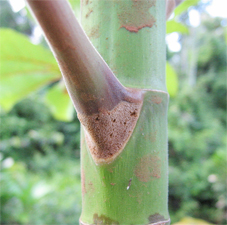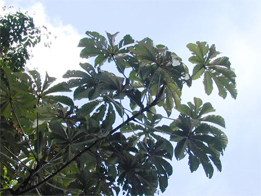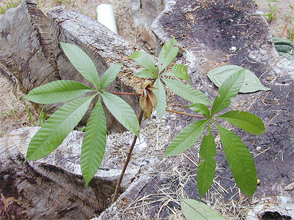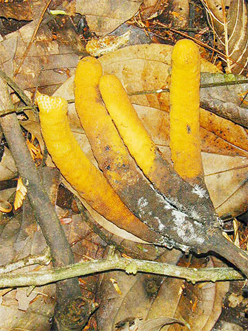The Congo Pump is known as a pioneer or secondary species which means it is opportunistic and when large clearings are made in the forest it establishes itself and colonises. Pioneer species require significant amounts of light to thrive and once shaded out they usually die. Congo Pump is one of the predominant groups of plants found in the early stages of secondary growth. They are therefore a very important species in areas which have been disturbed. Some examples of growth are evidenced along roads and in large clearings for developmental purposes. In commercially logged forests, you can understand why it is very important to ensure that the gap sizes are minimized to retain the original stocks in the forest. To help with this, the Guyana Forestry Commission has a Code of Practice for Timber Harvesting which outlines an “eight metre rule” which simply means that if there are two suitable trees in the forest to fell but they are less than eight metres apart, only one can be felled. This ensures that the gap sizes created will not be so large as to bring in the commercially undesirable species.
The wood is very light and soft with little utility. However, some species of Cecropia (eg, C. petalta) have been used for rafts and occasionally for charcoal. The inner bark provides a useful fibre and the latex has been used in native medicines. The hollow branches can be used as pipes or to make flutes. The leaves and bark of the local species (especially C. obtusa) are used to produce a type of bush tea.|


Another interesting fact about the Congo Pump is the symbiotic (mutually beneficial) relationship it has with ants. The ants feed on the glycogen-filled tissue at the base of the leaf stalks and in turn provide protection for the plant.
|


Rain forests are rich in biodiversity and are home to many different plants and animals as well as indigenous communities. Humans, even those who don’t live in the rain forest, rely on it for resources such as building materials (wood and lianas), medicine and fruits. Rain forests also provide essential environmental services for life on earth; they create soil as well as prevent soil erosion, produce oxygen though photosynthesis, maintain clean water systems, and are a key defence against climate change.
The Iwokrama Rain Forest is 371,000 hectares, located in the heart of Guyana. Our mission is to develop strategies for conservation and sustainable development for local people in Guyana and the world at large. We are involved in timber, tourism and training. Come and visit us in the rain forest or at http://www .iwokrama.org.





